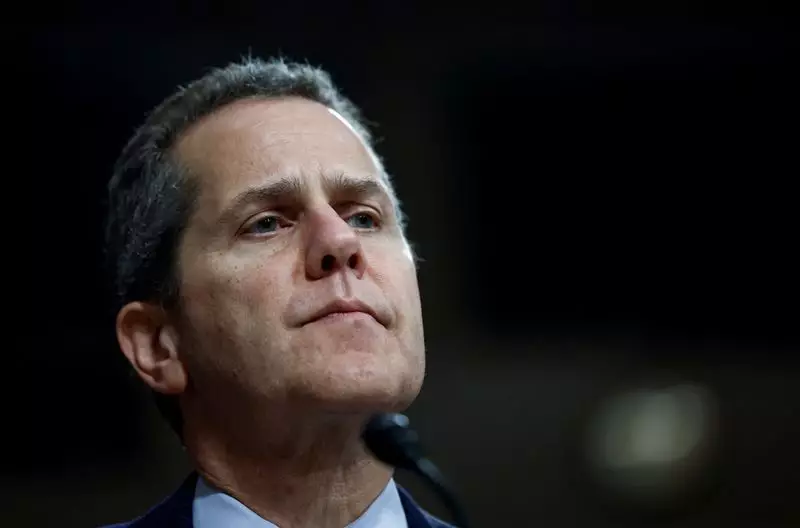In a significant move within the banking regulation landscape, Michael Barr, the Federal Reserve’s Vice Chair for Supervision, announced his resignation effective February 28, 2024. This decision arrives just days before President-elect Donald Trump is set to take office, potentially reshaping the regulatory environment of the financial sector. Barr’s unexpected departure is being interpreted in multiple ways, pointing to an evolving relationship between the Federal Reserve and the forthcoming administration.
Barr’s resignation is notable not only for its timing but also for its implications on the future direction of U.S. bank regulation. Initially appointed by President Joe Biden, Barr had established himself as a firm advocate for stricter rules intended to bolster the resilience of large financial institutions. His tenure was marked by efforts to install rigorous capital requirements and address vulnerabilities identified in the banking system—a course that drew sharp criticism and extensive lobbying from major financial players.
His decision to step down prior to the expiration of his term, which was set to last until July 2026, suggests an elementary concession to the incoming Trump administration. By vacating his position, Barr likely averted a protracted legal battle, a situation that could have detracted from the Federal Reserve’s core responsibilities. This strategic retreat points to the understanding that maintaining continuity within the institution may carry more significance than the political tussles that could arise from remaining entrenched in a contentious role.
The aftermath of Barr’s exit paves the way for Trump to appoint a successor who is potentially more aligned with an industry-friendly regulatory framework. This transition signals a major shift in the regulatory priorities that could minimize the stringent oversight that characterized Barr’s agenda. The Federal Reserve has long operated under a principle of independence, which has allowed it to navigate monetary policy without undue political influence. However, the anticipated appointments by Trump may alter this balance, thereby fostering an environment conducive to deregulation.
Key voices within the banking sector are hopeful that upcoming changes will alleviate some of the stringent capital requirements previously advocated under Barr’s leadership. The strong market reaction following the announcement—evidenced by a surge in shares of significant banking entities such as Citigroup and Bank of America—reveals a clear optimism from investors regarding the potential rollback of regulations that they viewed as restrictive.
The Challenges Ahead: Regulatory Landscape Post-Barr
Despite these immediate financial gains for the banking sector, Barr’s exit does not create a seamless path for Trump and his team. For one, the Federal Reserve Board of Governors currently has no vacant seats until 2026, which constrains the administration’s ability to implement immediate changes. To replace Barr, Trump’s team may have to reshuffle existing board members—an act that could provoke further delays in pursuing an altered regulatory framework.
Moreover, there remains a strong Democratic majority on the Fed board, which will inherently limit the scope of any rapid deregulatory measures. Political analysts suggest that while Barr’s departure opens doors to potential regulatory shifts, significant changes will likely face scrutiny and resistance from other board members committed to maintaining regulatory oversight over the banking sector.
The Future of Federal Reserve Governance
The implications of Barr’s resignation extend beyond immediate regulatory adjustments and into the broader realm of Fed governance and its operational autonomy. Reports have surfaced hinting at the Trump administration’s interests in increasing its control over Fed policies, which raises concerns among economists and policymakers regarding the independence of monetary policy. The preservation of this independence is paramount to ensuring that the Fed can effectively manage inflation, employment, and financial stability without excessive political interference.
Federal Reserve Chair Jerome Powell, having been appointed by Trump himself, may find himself again at odds with the president as pressures mount to adjust policy approaches. The legal parameters surrounding the president’s ability to remove or reassign Fed officials suggest that such actions cannot be taken lightly. Powell’s statements reinforcing the independence of the Federal Reserve provide a crucial perspective on maintaining institutional integrity amid external pressures.
Michael Barr’s resignation is a pivotal moment within the landscape of U.S. banking regulation. While it opens doors for Trump to reshape the regulatory environment towards a more lenient approach, it simultaneously sets the stage for considerable political maneuvering. The tension between regulatory oversight and deregulatory ambitions will undoubtedly define the future of the Federal Reserve, calling into question the balance of independence necessary for effective monetary policy. As the transition unfolds, stakeholders across the financial spectrum will need to remain vigilant, prepared for what lies ahead in this evolving chapter of American banking regulation.

